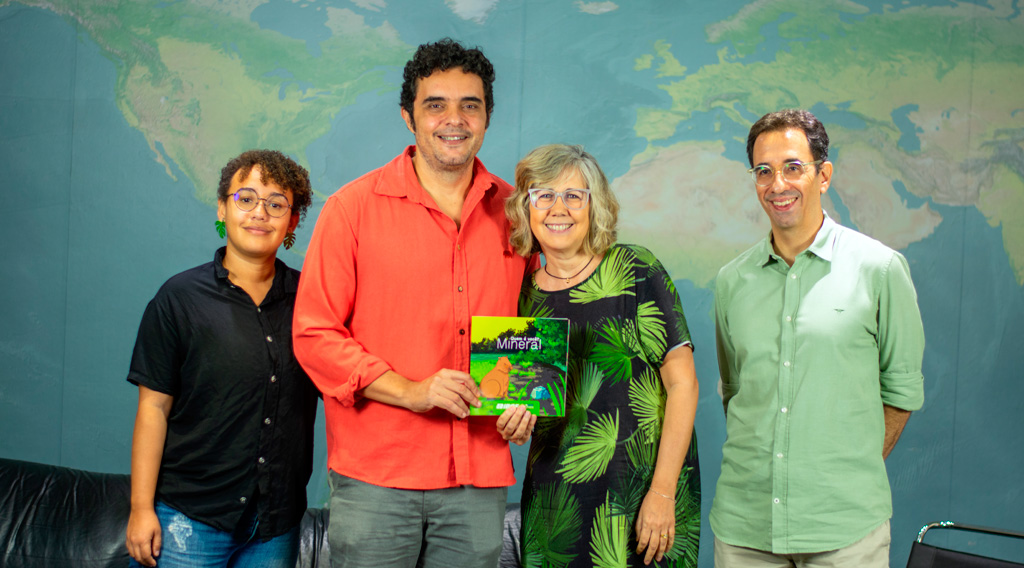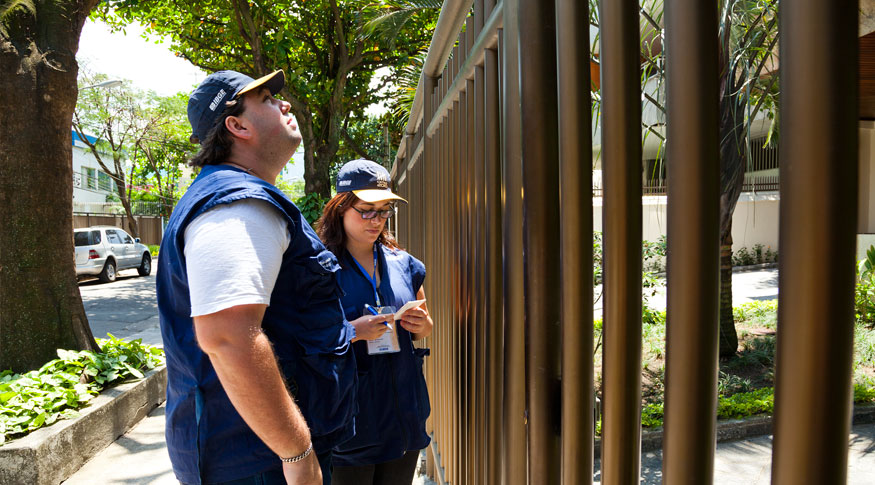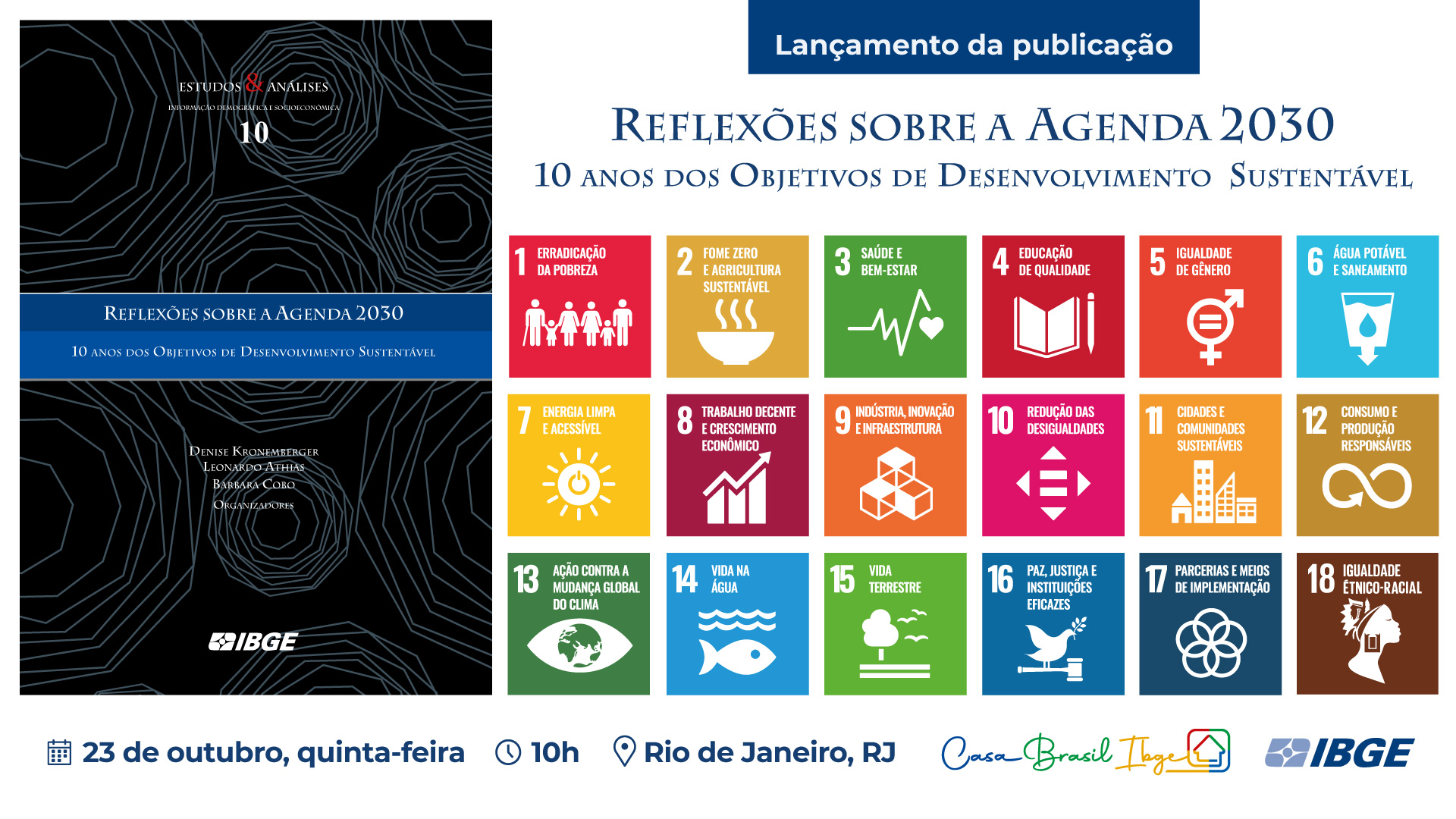PNS
64.6% of men aged 15 and over had become fathers by 2019
August 26, 2021 10h00 AM | Last Updated: August 31, 2021 06h44 PM
Highlights
- Most (64.6%) men over 15 years of age had had at least one child by 2019.
- 19.0% of the men aged 15 to 29 were fathers, whereas among those aged 60 anos and over that percentage reached 91.4%.
- In the North Region, 24.5% of men aged 15 to 29 were fathers, whereas in the Southeast, 15.2% were.
- The average number of children of men above 15 years of age was 1.7. That figure was higher among men without schooling or with incomplete primary education (2.7) than among those with a high school diploma or a higher education degree (1.2).
- Most fathers (76.7%) reported having taking part in the prenatal care of their pregnant partners or before the birth of their youngest child under six years of age.
- 76.0% of the children aged between 6 months and two years of age had been vaccinated with three doses of the polio vaccine, against a disease also know as infantile paralysis.

In 2019, 64.6% of the men aged 15 and over had had at least one child. That proportion decreases as the level of schooling increases. Among persons without schooling of with incomplete primary education, 76.8% were fathers, whereas those that had a high school or a higher education degree, that percentage reached 59.9%. These data come from the national Survey of Health (PNS) 2019 – Life cycles, released today by the IBGE, which, for the first time, has investigated fatherhood.
“Fatherhood varied by age group of men. Among youngsters aged 15 to 29, 19.0% were parents, whereas among those aged 30 to 39 that percentage was 68.9%; 85.3% for persons aged 40to 59 anos; and 91.4% for persons aged 60 and over. It is worth mentioning that the reproductive cycle of many men, especially older ones, may be starting or incomplete”, says the survey analyst Marina Águas.
In the two oldest age groups, that is, amomg men aged 40 and 59 and those aged 60 and over, the percentage of those who were parents was higher, by 80% and 90%, respectively, regardless of the region or sociodemographic segment analyzed But there are differences among younger men.
“We can see that, in the two lower age groups (15 to 29 anos and 30 to 39), the percentage of white men with children (respectively 14.2% and 64.0%) was lower that among black and brown men (exceeding 20% and 70%, respectively). And persons with a lower level of schooling make up a bigger percentage than persons with a higher level of schooling”, says the researcher.
Besides the level of schooling among youngest men (between 15 and 29 years of age), fatherhood varied according to the Major Region of residence. In the North, for example, 24.5% of men in this age group were fathers, whereas in the Southeast that percentage was 15.2%.
The average number of children was also investigated by the survey. Among men older than 15, the average was 1.7 children. This figure increases with the age bracket: the average number of children men older than 60 had was 3.6. Men with a lower level of schooling also had, on the average, more children. Among those without schooling or eith incomplete primary education, the average of children was 2.7; considering those with a high svhool fiploma or a higher education degree, the figure falls to 1.2. “The average number of children is bigger for those with a lower level of schooling and also for those with lower income, since education is strongly related to income.”
White men aged 60 and over had, on the average, 3.1 children, whereas black or brown ones, 4.2. “The higher the income, the higher the level of schooling, or for self-declared white men, who, in Brazil, are associated with a more comfortable economic status, the smaller the percentage of men with children in comparison with other groups that do not share these conditions. It is also possible to observe that in relation to the average number of children,” says the researcher.
Another aspect observed in relation to fatherhood was the average age of men at the time of birth of their first child. Considering all the age groups, men were, on the average, 25.8 years of age when they became fathers, being this figure smaller in the rural area (24.9) and bigger in the urban area (26.0). In the North, men, on the average, had their first child at a younger age (24.3), whereas, in the Southeast, that happened at an older age (26.6).
10.4% of men aged over 35 did not want to be a father
Men whose partners were pregnant of whose youngest child was up to 6 were asked about jow much they had wished for that pregnancy. Among those aged 15 to 34, 65.5% really wanted to have the child at that time; 27.3% wished they could have waited onlger and 7.3% did not want to have children or any more children. The percentage of men who wanted to have a child then increases in the group abive 35 years of age: 74.8%. However, 10.4% in this age group wished they had not have a child or did not want to have another child.
“The objective of this survey was to discover if men have had active and conscious participation in reproductive planning, knowing either about their intention to have a child or their participation in prenatal care of that child. Based on these data, public policies can be planned so as to encounrage more activie participation in prenatal care and to reduce the number of unplanned pregnancies,” Ms. Águas says.
According to the PNS analys, the investigation of father hood is an advance for the IBGE. “The inclusion of this topic also has to do with the observation of reproductive behavior from the perspective of men. We are at a moment of changes in behavior and having information about them is necessary for us to understand these transformations.”
76.7% of fathers participated in prenatal care
Most (61.3%) of men reported that the prenatal care of their children had taken place in the Unified Health System (SUS), being more common in the rural area (79.8%) than in the urban area (57.4%). SUS was also the most used service by men with lower income (87.3%). Among those with higher income, only 6.2% used the public health system for that purpose.
About 9.9 milhões (76.7%) of men reported having taken part in prenatal care of their pregnant partner or of their youngest child aged up to six years of age. The participation of fathers in the Southeast (83.8%) and in the South (82.9%) was above the national average, differently from fathers in the North (67.4%) and in the Northeast (67.7%). Among men with per capita household income above five minimum wages, pre-natal accompanying reached 91.5%.
“Most fathers reported having participated in the prenatal care period, but that figure changes. In the North and Northeast, this percentage is smaller than in the Southeast and South and, the lower the income, the more reduced the participation of men in this process,” Ms. Agua says. The reasons that caused the non-participation of father in prenal care can be found in the National Survey of Demography and Health (PNDS), another partnership of the IBGE with the Ministry of Health.
During this process, 19.5% of men reported having taken all the required exams, 51.6% of them reported having been informed about the possibility of watching the delivery and 20.2% were encouraged to take part in conversations and/or courses about baby care.
76.0% of the children aged six months to to two years were vaccinated against polimelitis
In 2019, according to PNS, 76.0% of the children aged six months to less than 2 years were vaccinated with at least three doses against poliomelitis, a disease known as infantile paralysis. The National Immunization System (PNI) recommends that these three doses be adminstered, at two, four and skix months of age. After this period there is a planning for two extra doses up to the age of four.
Pentavalent vaccine, against tetanus, hepatitis B, whooping cough, diphtheria and other infections caused by the bacteria haemophilus influenza type b, must be administered with doses at the ages of two, four and six months of age. PNS estimated that 76.2% of the children aged six months to less than two years of age had been vaccinated with three doses of this vaccine.
Considering children aged four months to less than two years of age, 89.9% had been vaccinated with two doses of pneumococcal vaccine. It protects people against the pneumococcal diseasee, which can cause pneumonia, otitis, meningitis and other diseases. Among persons aged 12 months to two years of age, who should have taken two doses and also an extra dose, less than half (46.7%) had followed these recommendations.
The triple vaccine, against measles, mumps and rubella, had been administered to less than half (53.3%) of the children aged 12 months to less than two years of age.



















